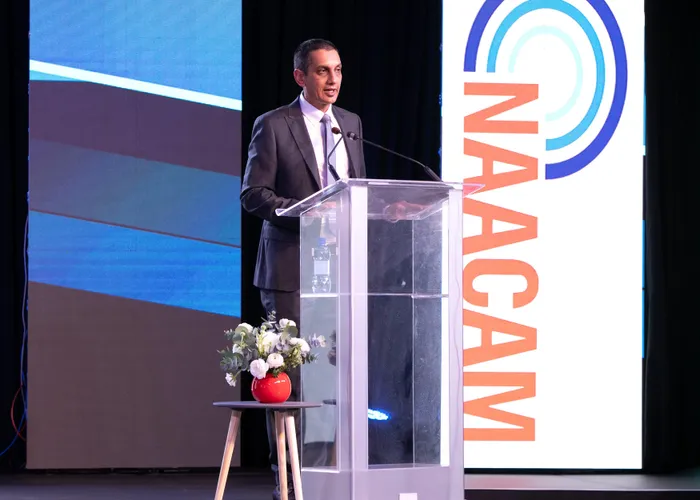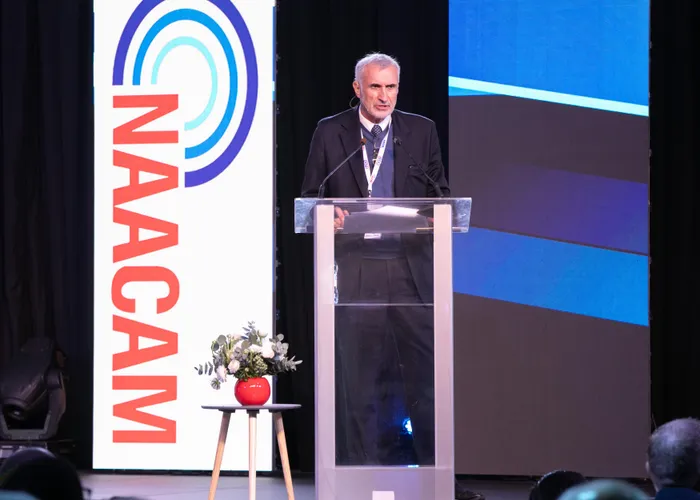Exploring the future of South Africa's automotive industry at NAACAM 2025

Industry players in the automotive industry have described the National Association of Automotive Component and Allied Manufacturers (NAACAM) 2025 show in Gqeberha as an opportunity to discuss challenges affecting the automotive industry and solutions to the challenges.
Image: Supplied NAACAM
Industry players in the automotive industry have described the National Association of Automotive Component and Allied Manufacturers (NAACAM) 2025 show in Gqeberha as an opportunity to discuss challenges affecting the automotive industry and solutions to the challenges.
Stefani Jacobs, Product Genius at BMW Port Elizabeth, said that NAACAM brings together a diverse group of people. “We need a platform like NAACAM to come together and connect and make partnerships and how we can rely on each other. The more we work, the more we can produce locally produced cars.”
Jacobs believes that the automotive industry has significant potential in South Africa. “The BMW brand is doing well in South Africa. The BMW X3 is still one of the biggest sellers. There is still a demand for new cars, and I believe that there is potential for the industry to grow even further.”
Renai Moothilal, the CEO and Executive Director of the National Association of Automotive Component and Allied Manufacturers (NAACAM), said that South Africa’s automotive industry has the potential to be more inclusive, resilient, and globally competitive as a manufacturing hub. “This is crucial as the G20 is approaching amid changing world trade and dynamics. South Africa’s automotive sector contributes almost 23% to the manufacturing output and almost 5% to the country’s GDP. It anchors South Africa’s base by providing skilled jobs.”
Moothilal added that component manufacturers alone employ more than 85,000 people and support hundreds of thousands more people. “Last year, component exports reached nearly 64 billion, with our top markets spanning Asia, Europe, and North America. Even with trade disruptions and tariffs brought about by the Trump administration, our sector continues to prove its adaptability and resilience in the face of these challenges. Achieving 60% local content in line with the SA Automotive Masterplan could unlock billions in new productions and new procurement opportunities, benefit SMMEs, and create thousands of jobs.”

Industry players in the automotive industry have described the National Association of Automotive Component and Allied Manufacturers (NAACAM) 2025 show in Gqeberha as an opportunity to discuss challenges affecting the automotive industry and solutions to the challenges.
Image: Supplied by NAACAM
The National Association of Automotive Component and Allied Manufacturers (NAACAM) 2025 show in Gqeberha has been hailed by industry leaders as a critical opportunity to address the myriad challenges currently facing South Africa's automotive sector.
As the world shifts towards new trade dynamics and faces unpredictable economic landscapes, the importance of collaboration and partnership in the industry has never been more vital.
Stefani Jacobs, product genius at BMW Port Elizabeth, expressed her enthusiasm about the gathering.
“We need a platform like NAACAM to come together and connect; to make partnerships and find ways we can rely on each other. The more we work together, the more we can produce locally made cars,” Jacobs said.
“The BMW brand is doing well in South Africa. The BMW X3 is still one of the biggest sellers, and there continues to be strong demand for new cars, which indicates there is potential for further growth.”
Renai Moothilal, the CEO and executive director of NAACAM, reinforced this sentiment, stating that South Africa’s automotive industry has the potential to become more inclusive, resilient, and globally competitive.
He pointed out that the sector contributes almost 23% to the manufacturing output and nearly 5% to the country’s GDP.
“Our automotive sector anchors South Africa’s economy by providing skilled jobs. Component manufacturers alone employ over 85,000 people and support hundreds of thousands more,” he said.
Moothilal also indicated the resilience of the industry. Despite enduring challenges like trade disruptions and tariffs, notably under the Trump administration, the automotive sector continues to demonstrate adaptability. Achieving a target of 60% local content, as outlined in the SA Automotive Masterplan, could unlock billions in new production opportunities and create thousands of jobs.
The Automotive Industry Development Centre (AIDC) – Easter Cape board chairperson, Phumzile Zitumane, highlighted the significance of the event, saying the economy relied on the automotive sector and its value chain.
Zitumane called for urgent, collective action among government, businesses, and communities to devise quick solutions to these challenges.
Moreover, Tshetlhe Litheko, chief policy officer at Automotive Business Council, viewed the decision to bring NAACAM to the Eastern Cape as a brilliant move, given its local manufacturing presence.
He pointed out that while US President Donald Trump's tariffs posed significant challenges and could temporarily reduce car exports, the industry has the capacity to recover and redefine itself in the coming years.
Andrew Kirby, CEO of Toyota SA and Task Force Chair of B20, emphasised the necessity of industrialisation as a resilience strategy.
“In our world of geopolitical shifts, we’ve had supply chain disruptions due to everything from pandemics to climate change. Industrial capability is what helps countries recover faster and adapt strategically,” Kirby said.
He underscored the need for an industrialisation strategy that is inclusive, adaptable, and primed for future innovations.
BUSINESS REPORT